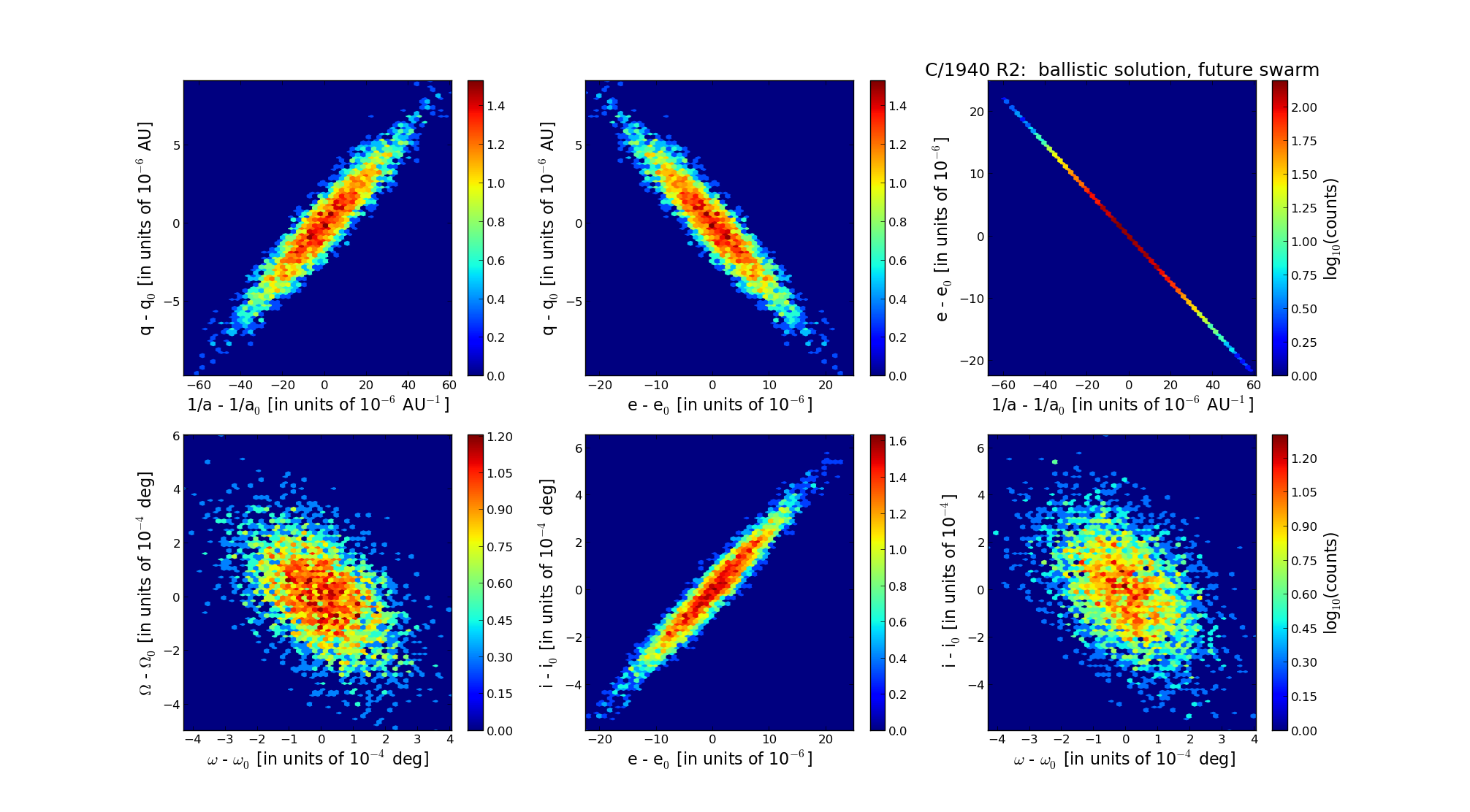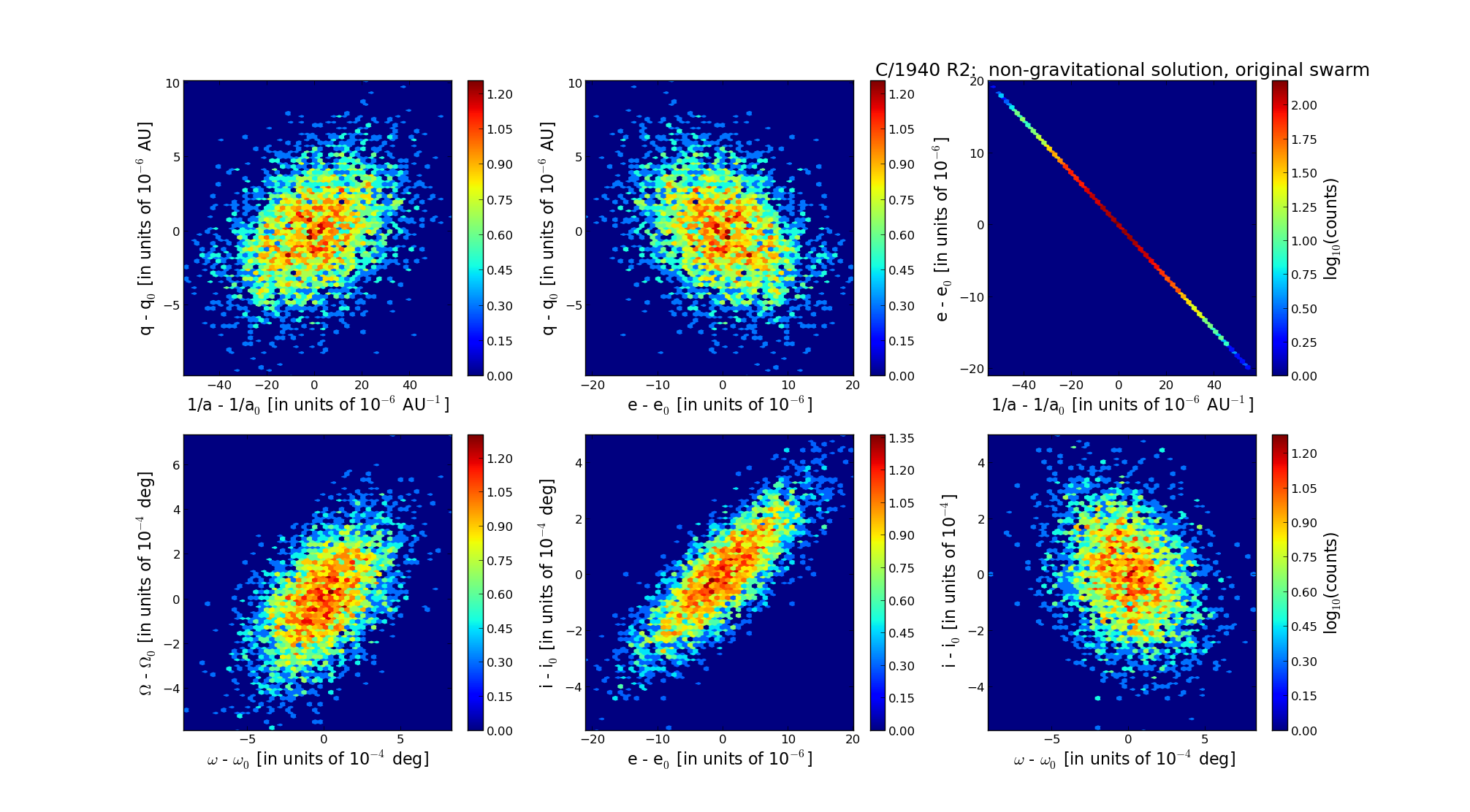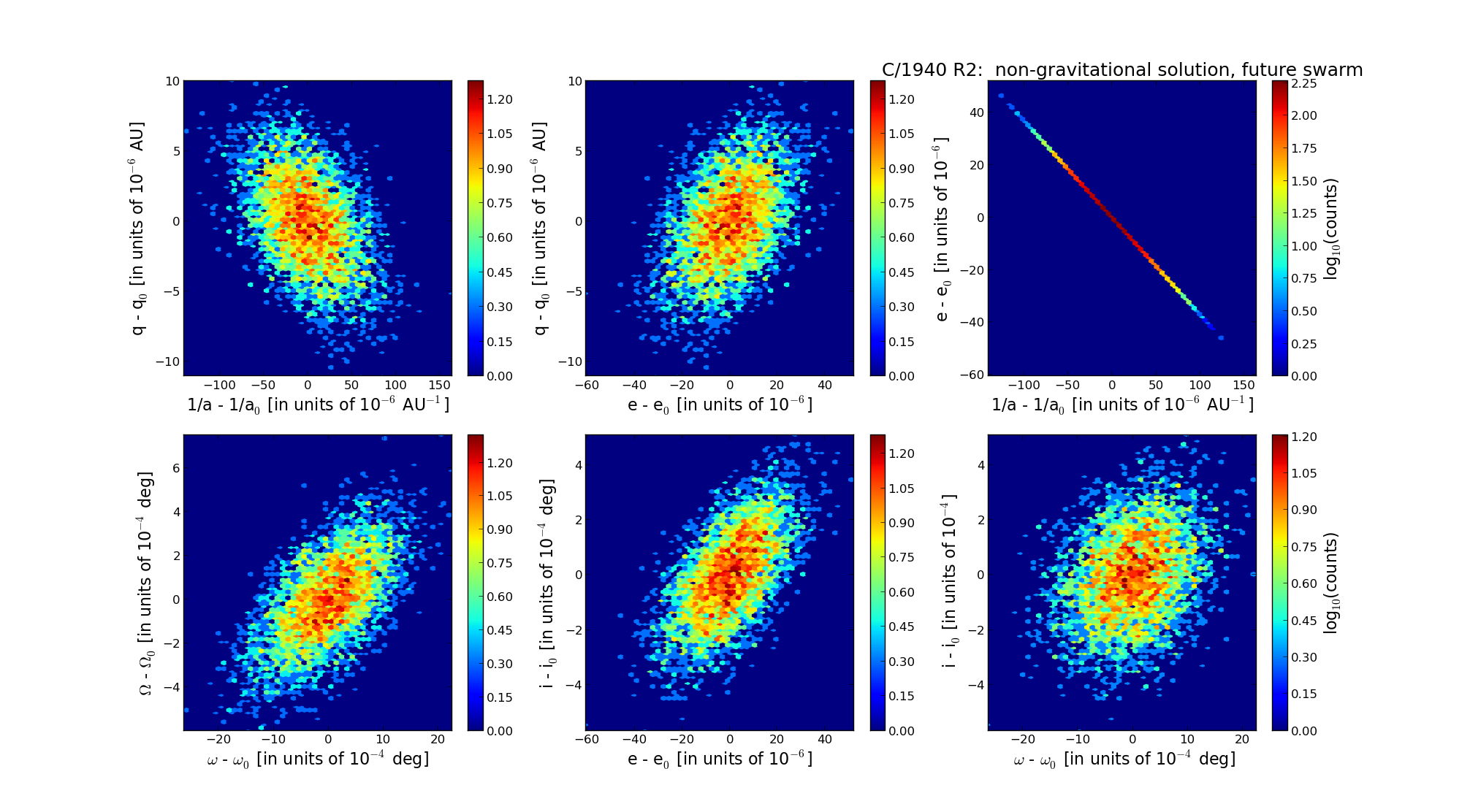| Solar System Dynamics & Planetology Group |
 |
C/1940 R2 Cunningham |  |
| Solar System Dynamics & Planetology Group |
 |
C/1940 R2 Cunningham |  |
| number of observations | 370 |
| number of residuals | 678 |
| data interval | 1940 Aug. 25 — 1941 Apr. 1 |
| rms [arcsec] | 1.77 |
| orbit quality class | 1b |
| Epoch (TT) | 19410106.0 | = JD 2430000.5 |
| time of perihelion passage (TT) | 19410116.233869 | ± 0.000068 |
| perihelion distance | 0.36774076 | ± 0.00000272 |
| eccentricity | 1.00050751 | ± 0.00000650 |
| argument of perihelion [deg] | 199.568992 | ± 0.000117 |
| longitude of the ascending node [deg] | 296.590441 | ± 0.000141 |
| inclination [deg] | 49.894827 | ± 0.000173 |
| inverse semimajor axis [10-6 au-1] | -1380.07 | ± 17.68 |

| Epoch (TT) | 16440830 | |
| time of perihelion passage (TT) | 19410115.973517 | ± 0.000159 |
| perihelion distance | 0.36427644 | ± 0.00000282 |
| eccentricity | 1.00002186 | ± 0.00000646 |
| argument of perihelion [deg] | 199.546182 | ± 0.000115 |
| longitude of the ascending node [deg] | 296.892318 | ± 0.000141 |
| inclination [deg] | 50.185071 | ± 0.000168 |
| inverse semimajor axis [10-6 au-1] | -60.01 | ± 17.74 |

| Epoch (TT) | 22210806 | |
| time of perihelion passage (TT) | 19410115.372565 | ± 0.000073 |
| perihelion distance | 0.37020628 | ± 0.00000271 |
| eccentricity | 1.00060367 | ± 0.00000657 |
| argument of perihelion [deg] | 199.642916 | ± 0.000117 |
| longitude of the ascending node [deg] | 296.590685 | ± 0.000141 |
| inclination [deg] | 49.670477 | ± 0.000171 |
| inverse semimajor axis [10-6 au-1] | -1630.62 | ± 17.75 |
| number of observations | 370 |
| number of residuals | 670 |
| data interval | 1940 Aug. 25 — 1941 Apr. 1 |
| rms [arcsec] | 1.49 |
| orbit quality class | 2a |
| Epoch (TT) | 19410106.0 | = JD 2430000.5 |
| time of perihelion passage (TT) | 19410116.234772 | ± 0.000092 |
| perihelion distance | 0.36774724 | ± 0.00000232 |
| eccentricity | 1.00040431 | ± 0.00001067 |
| argument of perihelion [deg] | 199.570995 | ± 0.000226 |
| longitude of the ascending node [deg] | 296.590817 | ± 0.000180 |
| inclination [deg] | 49.893846 | ± 0.000157 |
| inverse semimajor axis [10-6 au-1] | -1099.42 | ± 29.03 |
| Nongravitational parameters [10-8 au/day2] | A1 = 1.426 ± 0.155 | A2 = -0.0396 ± 0.0598 | A3 = 0.0 (assumed) |

| Epoch (TT) | 16430617 | |
| time of perihelion passage (TT) | 19410115.973647 | ± 0.000186 |
| perihelion distance | 0.36427385 | ± 0.00000275 |
| eccentricity | 0.99998121 | ± 0.00000624 |
| argument of perihelion [deg] | 199.547949 | ± 0.000223 |
| longitude of the ascending node [deg] | 296.892704 | ± 0.000181 |
| inclination [deg] | 50.184132 | ± 0.000151 |
| inverse semimajor axis [10-6 au-1] | 51.59 | ± 17.12 |

| Epoch (TT) | 22221129 | |
| time of perihelion passage (TT) | 19410115.373155 | ± 0.000183 |
| perihelion distance | 0.37020004 | ± 0.00000311 |
| eccentricity | 1.00055310 | ± 0.00001323 |
| argument of perihelion [deg] | 199.639408 | ± 0.000646 |
| longitude of the ascending node [deg] | 296.591043 | ± 0.000184 |
| inclination [deg] | 49.669507 | ± 0.000154 |
| inverse semimajor axis [10-6 au-1] | -1494.06 | ± 35.72 |